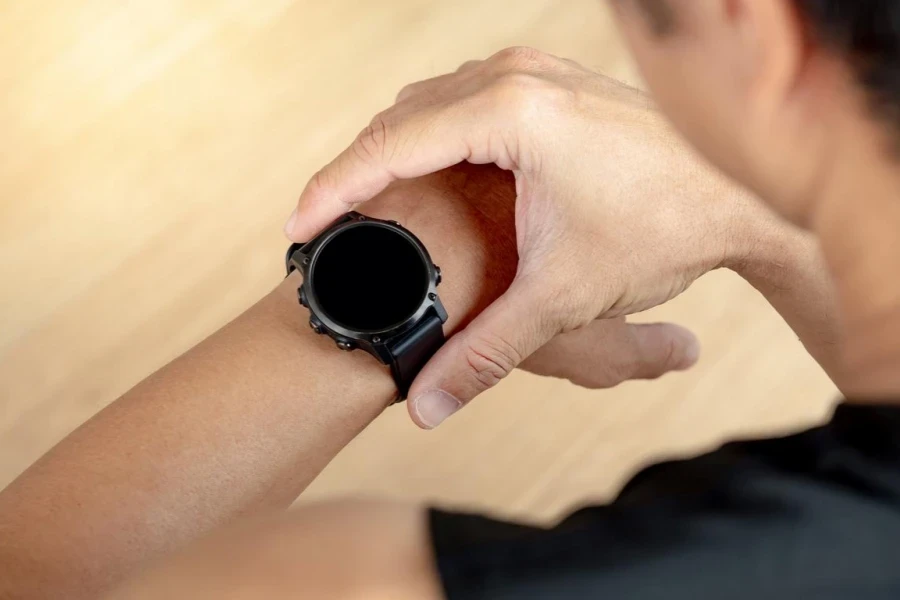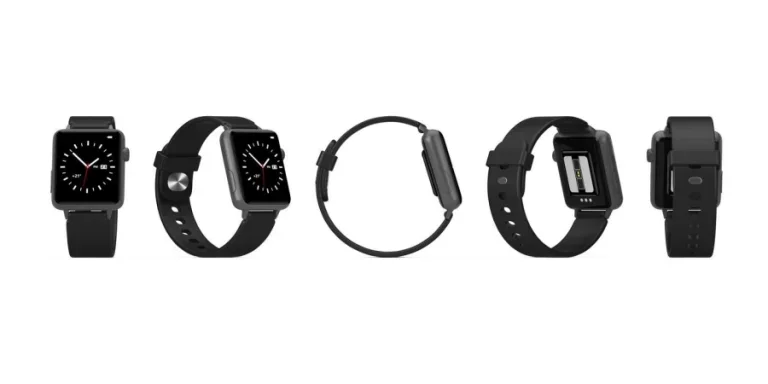Table of Contents
1. Introduction
2. Understanding the Main Types of Heart Rate Monitors
3. 2024 Market Insights: Heart Rate Monitors
4. Key Considerations When Selecting Heart Rate Monitors
5. Leading Models and Their Features
6. Conclusion
Introduction
Heart rate monitors have become essential tools for tracking physical performance and health metrics, offering a precise way to measure heart activity during exercise. These devices help users monitor their intensity levels, optimize training, and improve overall cardiovascular health. From chest straps to wrist-based monitors, they cater to diverse professional needs by providing data-driven insights for more efficient workouts. Heart rate monitors can be instrumental in enhancing fitness programs, reducing the risk of overtraining, and supporting performance improvements, making them highly valuable in today’s health-conscious environment.
Understanding the main types of heart rate monitors

Chest straps
Chest strap heart rate monitors are renowned for their superior accuracy. These monitors use sensors that detect electrical signals from the heart, offering a highly reliable reading of heart rate. Because of this precision, they are preferred by athletes and fitness professionals who need real-time, detailed heart rate tracking during intense workouts. However, the drawback of chest straps lies in their comfort. Many users find them somewhat restrictive, especially when worn for extended periods or during more casual activities. Despite this, their accuracy remains unmatched.
Armband and finger-based options
Armband heart rate monitors present a middle ground between chest straps and wrist-based monitors. They offer a higher degree of comfort compared to chest straps while providing more accurate readings than wrist-based options, especially during vigorous exercises. Armbands are designed to fit snugly around the upper arm, which helps maintain sensor accuracy. Finger-based monitors, though less common, provide a more discreet and minimalistic option. However, their accuracy tends to be lower compared to chest and armband monitors, making them less suitable for professional fitness tracking.
Pros and cons of each type
Each type of heart rate monitor comes with its own strengths and weaknesses. Chest straps are the most accurate but can be uncomfortable for prolonged wear. Wrist-based monitors offer the most comfort and convenience, making them ideal for everyday use, though they may sacrifice accuracy during high-intensity activities. Armband monitors strike a good balance between comfort and precision, making them a versatile choice for both casual fitness and more demanding exercises. Finger-based monitors, while discrete, often lack the reliability required for detailed heart rate tracking. Selecting the right monitor depends on the specific needs of the user, whether they prioritize accuracy or ease of wear.
2024 market insights: heart rate monitors

Industry data and forecasts
In 2024, the global heart rate monitor market is on a steady growth trajectory, with an expected compound annual growth rate (CAGR) of approximately 11% to 15% projected from 2024 to 2029. This expansion positions the market to potentially surpass $21 billion by the end of 2030, as noted by Technavio Reports. North America leads the market, benefiting from its advanced healthcare infrastructure and high adoption rates of wearable technology. Europe also maintains a strong presence, driven by a focus on cardiovascular health and an aging population, which has heightened demand for personal health-monitoring tools.
Emerging trends and consumer preferences
One of the leading trends is the growing popularity of smartwatch integration, which combines fitness tracking with smart features like GPS, music control, and contactless payments. Consumers are increasingly looking for devices that offer seamless connectivity with fitness apps and digital health platforms, enabling a more comprehensive approach to health monitoring. Additionally, the rise of remote health monitoring is becoming a significant driver in the market, with more consumers and healthcare providers relying on wearables for preventive care and real-time heart health insights.
Key considerations when selecting heart rate monitors

Accuracy and comfort
Accuracy is a critical factor when choosing a heart rate monitor. Chest strap models are generally considered the most accurate, as they use electrical signals from the heart to provide precise, real-time data. Wrist-based monitors, while more convenient, use optical sensors and can be less accurate, particularly during high-intensity activities. When it comes to comfort, wrist-based monitors are more user-friendly and less obtrusive, making them ideal for extended wear. Adjustable straps and lightweight designs are essential for ensuring the monitor remains comfortable, whether for casual use or during workouts.
Battery life and connectivity
Battery life is an important consideration, especially for users engaged in long-duration activities. Chest straps often offer longer battery life, with some models lasting up to 400 hours, while wrist-based monitors tend to require more frequent recharging. Connectivity is another crucial feature; modern heart rate monitors often support Bluetooth and ANT+ technologies, ensuring compatibility with smartphones, fitness apps, and other devices. Reliable connectivity allows seamless data transfer, enabling detailed performance analysis after each session.
Device compatibility and ease of use
Compatibility with other devices and platforms can significantly enhance the functionality of a heart rate monitor. Many modern monitors integrate with popular fitness apps and smartwatches, enabling users to sync their data effortlessly. Ease of use is essential, particularly for professionals needing quick access to data. Devices with clear, intuitive displays and simple controls allow for easy monitoring during workouts, reducing distractions and maximizing focus on performance.
Special features and customization options

In addition to core functions, many heart rate monitors come with specialized features that add value. Waterproofing is important for those who swim or train outdoors, while GPS tracking and customizable heart rate zones provide added flexibility for tailored fitness plans. Some models also offer recovery tracking and stress analysis, which can be valuable for those focused on holistic health monitoring. The ability to adjust settings and receive real-time feedback ensures the monitor adapts to different training needs and preferences, making it an indispensable tool for optimizing fitness and performance.
Leading models and their features
Best chest straps for athletes
Chest strap heart rate monitors are known for their superior accuracy, making them a popular choice for athletes and fitness professionals. These monitors use electrical signals from the heart to provide real-time data, crucial for those participating in high-intensity training. Modern chest straps feature dual connectivity, often using both ANT+ and Bluetooth, allowing seamless integration with various devices like smartwatches, fitness trackers, and gym equipment. Additionally, many models are designed with long-lasting battery life, lasting up to 400 hours, and comfortable, adjustable straps that stay secure during vigorous activities. These features ensure that athletes can rely on precise heart rate monitoring throughout their training sessions.
Top wrist-based monitors for convenience
Wrist-based heart rate monitors offer a more user-friendly option for those who prioritize convenience and comfort. While chest straps are renowned for accuracy, wrist-based monitors are more practical for everyday use. They utilize optical sensors that detect changes in blood flow to estimate heart rate. These devices are typically integrated into smartwatches, offering added functionalities like GPS tracking, sleep monitoring, and activity notifications. Their versatility makes them suitable for individuals who want to track their health throughout the day without the need for multiple devices. Wrist-based monitors also tend to be lighter and more comfortable, making them an excellent option for general fitness tracking and casual wear.
Advanced models with multi-sport capabilities

Multi-sport athletes require heart rate monitors that can track diverse activities, from running and cycling to swimming and rowing. These advanced models often come with specialized sport modes and provide in-depth performance metrics like stride length, ground contact time, and swimming efficiency. Durability is another essential feature, as many of these monitors are water-resistant and equipped with onboard memory, allowing users to track their heart rate even during extended sessions without needing constant connection to their primary device. This makes them perfect for athletes looking for comprehensive performance data across different sports.
Budget-friendly options without compromising quality
For those looking for reliable heart rate monitoring on a budget, several models offer impressive performance without a high price tag. These budget-friendly heart rate monitors often include essential features like Bluetooth and ANT+ compatibility, ensuring they can sync with a wide range of devices. While they may lack advanced tracking features, such as multi-sport modes or extensive memory, they still provide accurate heart rate data and are ideal for casual users. Many budget models also include waterproofing and extended battery life, ensuring they can withstand regular use during a variety of fitness activities without frequent recharging or concerns about durability.
Conclusion
Selecting the right heart rate monitor ultimately depends on the specific needs and activities of the user. For athletes seeking precise data, chest straps offer unmatched accuracy, while wrist-based monitors provide greater convenience for all-day tracking. Advanced models with multi-sport capabilities are ideal for those engaged in diverse fitness activities, offering detailed performance insights. Budget-friendly options ensure reliable tracking without breaking the bank, making them accessible for a wide range of fitness enthusiasts. Understanding the key features, such as accuracy, comfort, and compatibility, will help professionals make informed decisions suited to their requirements.




